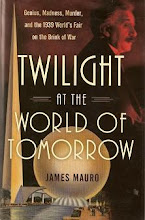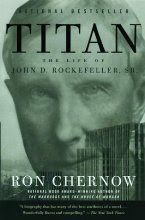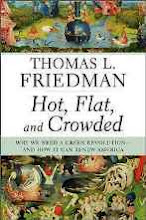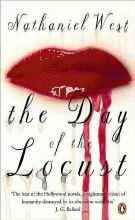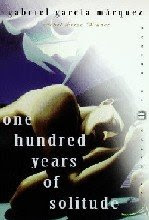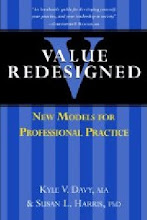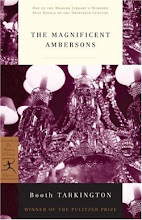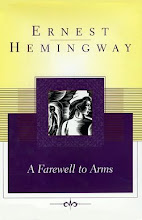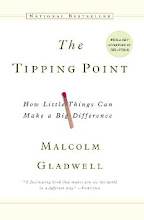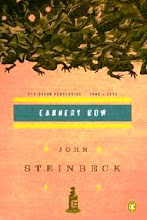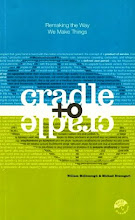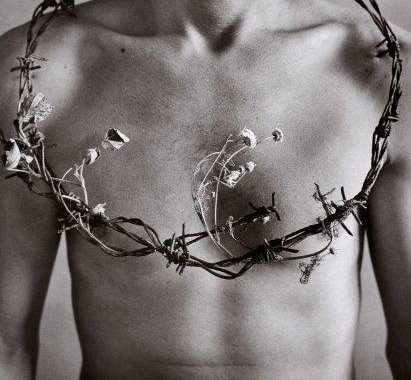20140819
The Pain of too Much Tenderness
But if you love and must needs have desires, let these be your desires:
To melt and be like a running brook that sings its melody to the night.
To know the pain of too much tenderness.
To be wounded by your own understanding of love;
And to bleed willingly and joyfully.
To wake at dawn with a winged heart and give thanks for another day of loving;
To rest at noon hour and meditate love's ecstasy;
To return home at eventide with gratitude;
And then to sleep with a prayer for the beloved in your heart and a song of praise on your lips.”
― Khalil Gibran
20120714
20120130
Atlas Shrugs Again
"She was seeing the brand of pain and fear on the faces of people, and the look of evasion that refuses to know it–they seemed to be going through the motions of some enormous pretense, acting out a ritual to ward off reality, letting the earth remain unseen and their lives unlived, in dread of something namelessly forbidden–yet the forbidden was the simple act of looking at the nature of their pain and questioning their duty to bear it."
Ayn Rand, Atlas Shrugged, Part 3, Ch. 2
If certainty is a value you treasure you won’t find any in the airlines these days. Each boarding pass is a lottery ticket to purgatory which was originally defined as the condition or process of purification or temporary punishment in which, it is believed, the souls of those who die in a state of grace are made ready for Heaven. In the modern airline vernacular, “purgatory has come to refer also to a wide range of conceptions of suffering short of everlasting damnation, and is used, in a non-specific sense, to mean any place or condition of suffering or torment, especially one that is temporary”. It is the term that most closely represents my overall experience with air travel. Seldom can I find a singular experience in the airline industry which is not embedded with some degree of punishment. I have forgone writing much about the torture of flying because it is so common place that the subject has become mundane and boring. However it now appears that the insensitive practice of treating your customers like compliant cattle being readied for slaughter has now been adopted as corporate policy. Just because almost an entire industry embraces predatory practices with little regard to public opinion does not make it right or proper and it’s time for me to take another stand.
In the past as a business traveler I was able to board a flight on the day of a meeting with a high degree of certainty (over 95%) that I would arrive on time. This concept has been so eroded that I can no longer guarantee my timely arrival to such a degree that I’m required to fly the day before just to be able to absorb the two, three, four hours of unexplained delays. We have now come close to accepting the fact not only do I have to invest a day of the front end to make a meeting, but I need to plan for not making it back the same day. It is absurd that a single two hour meeting requires a three day time commitment. Is it any wonder why our economy is dysfunctional, when I need to cover three times the labor for the same result? This has created a severe backlash from businesses and institutions that I work for where the trend is to hire local bozos that have half the capability and knowledge, all because they can’t afford to carry the cost of the airline industry’s incompetence. In end result of this trend is an acceptance of inferior substandard services and projects which as a recent client expressed to me as “it’s good to have local faces so when they screw up I can scream at them in person.” How can you create jobs if the system to transport them can’t get you there?
Not one to be shy of naming names, my current rant is leveled clearly at US Airlines. If you are disturbed enough to have read my earlier post “Philadelphia Tarpits”, yes you can shout it again “Let me guess!!!!!! US Air”. If you have four flights schedule from a small regional airport and only one ends up boarding with passengers, what does that tell you about your commitment to the business traveler. Flight one scrubbed because of mechanical issues as a pilot and a co-pilot jump into the cockpit, taxi out to the runaway and take off. Okay I can appreciate that your primary maintenance hub may not be at a small regional airport. Flight two never shows up because of weather delays on a day with the national radar totally devoid of a single cloud, begins to beg the question. Flight three just disappears from the board without explanation as some secret hand signal alerts the counter agents to book new arrivals on the next flight. I interpret the silent treatment as a reason that is so totally unacceptable as to create a riot at the gate. For example deciding that we have two half full planes going to the same location, unfortunately at different scheduled times, but wouldn’t it be neat to delay half our customers so we can shove their fat asses into a single flight and save a lot of money in the process.
Why do I feel like I’m living the modern version of Ann Rand’s Atlas Shrugged, where the great business minds slowly disappeared to create a secret alternative society? In our version the brilliant business minds have been replaced with computer algorithms that run purgatory or at least the random sentence of punishment you will receive by participating in the system. Look at the poor gate agents who have been demoted from a position of customer service that possessed a degree of power to change your future into a bunch of gate monkeys that now jump over the counter to help you push buttons on a computer screen with little apparent effectiveness of changing anything. The position has been degraded into a concept of misery loves company. In other words neither you nor the gate agents have any control over the quality of you experience, but its eases your pain greatly to know that you’re suffering is temporal, but this poor bastard’s punishment is eternal. It’s like the old freak show in the traveling circus, gate agents are so pitiful that you are compelled to feel empathy for them but so abhorrent that you need to avert your eyes out of fear you might become one. I can’t conceive a more inhumane and brutal existence than being a powerless gate monkey.
As I apply the concept of purgatory to my surroundings here at Charlotte International airport the veil of confusion is removed and clarity reveals itself. Besides being a depressing place to exist in, no matter how many overpriced commercial chain stores they sprinkle around, you begin to understand that there are three types of species that inhabit airports. There are those that don’t realize that they are in purgatory because there is some mistaken belief that they are getting a free pass out of this place. You can pick them out as they glide quickly light of foot running to the next connection. Their temperament is elevated and buoyant, with shoulders erect with purpose and possibility. For the most part this condition is fleeting as most are converted to the second species, those that understand they are in purgatory just unable to gage the full extent of punishment to be levied.
These individuals are solitary, angry and disgruntled sitting staring mindlessly at their worthless life as it passes before their eyes. They possess no equity or hope that salvation will come soon regardless of the endless penance and alms they offer the gods. Eventually they begin to aggregate into small groups in the confines of airport bars that poorly imitate gathering places in the real world that they would be enjoying only if they weren’t trapped in the airport. The complete lack of authenticity of these airport constructs actually deepens the complete and utter despair of being unjustly imprisoned by some flawed system. Assembled discretely along the long polished corridors like seasoned pickpockets in Rome these businesses exist by fleecing travelers heading to hell with eight dollar beers and twelve dollar unrecognizable fried delights or cheap grades of beef make into burgers, a legal and acceptable form of financial extortion.
The final species of the airport are those condemned to relive this horrific experience day after day as gate monkeys, shop attendants, security guards and now the unbelievably demeaning servitude of airport bathroom attendant. I won’t even go into my reasoning for that; it’s the equivalent of social waterboarding. I didn’t even know that there was that low a rung in hell. This species is more like ecosystem predators that while handed a life sentence of hard time, they sort of run the prison yard. They are famously hardened and insensitive, recognizable by the spiffy navy polyester uniforms they adorn, the equivalent of airport gang colors. Just try to jack with one of the gals behind the desk with that logo infused scarf nattily tied around her neck, within minutes you’re confronted with the rest of the gang ready to tack another six hours on to your carnival ride in hell. I’ve learned to steer clear of the predators because little good will come to you by offering the observation that Genghis Kahn has better interpersonal skills that this group combined.
About this time I’m expecting you to comment, “Mr. Blue, I detect your rant is slightly more cynical and adversarial that what I’m been accustom to in the past? Are you agitated to the level of whining, which seems so contrary to your affable fun loving character?” When confronted with such a self realization I must confess that my frustration level is rising. Consider the fact that I have now been flying about 150 flight segments a year for almost twenty years an admission which many could question my sanity. That places me in the top 1% of business travelers, not to mention that I foot the travel bill for a diminishing number of employees which travel almost as frequently as I do. I am the golden goose, the whale of business travelers, the most coveted prize but this most vaulted status has only been rewarded with a complete and comprehensive erosion of privileges and perks. I receive no greater consideration than the rube that has never flown before.
I don’t use the airline credit card at 27% interest rates so I don’t get to board early. I refuse to pay $400 a year to allow access to the airline clubs which used to be a privilege of frequent flyers so I search to corridors for a worn seat wedged between the teeming masses. There is no longer any consideration for food unless you travel international and it’s a law to prevent the spread of agricultural pests that customs prohibit food products be brought on to planes by travelers which require the airlines to feed you on international flight otherwise you would be starving for 18 hours. In most flights I don’t even deserve a complete can of soda. Why waste it on one person, just think of how much money the computers say they can save if the single $0.50 can of soda is doled out to seven people. I’m not allowed with one exception to check luggage without being penalized, god forbid the penalty for it being heavier than allowed. I am no longer allowed to change any aspect of my flight without penalty. In fact the legacy carriers will really stick it to you if pay for a flight and decide not to take one leg but want to resume your journey even though you have already paid for it. I am not allowed to sit in the exit row without paying more. I need to fork over a couple of bucks to get headphones if I decide to watch the movie.
All that being said I do accumulate air miles for free trips on my frequent flyer accounts. Has anyone you know been able to cash the miles in to book a flight? I’ve got about a million miles and can’t find a flight that is not blacked out. I looked on every flight on one airline to use my miles to go to Hawaii until I was over one year out and the airline website cut me off saying I could not book a flight that far in advance. In other words we will not allow you to use your miles to go where you want. They have a new way to screw you out of travel miles, it’s called the “anytime award” which is double the typical 25,000 mile award. For 50,000 miles you can actually book a flight using your miles. Let’s consider this privilege a bit closer. A typical flight segment for me is about 500-750 miles, so to get my free flight using an “anything award” I need to fly about 100 segments. When you figure out the time invested in a single flight with boarding, flying and waiting for luggage at 4 hours that means I need to invest about 400 hours to get my free trip. If I was to do this full time I would receive the ability to receive four free flights annually or they would return to me 16 hours of privilege. Even the most depraved employer will grant you seven days or 56 hours of holiday pay for full time employment. In essence the travel reward program is just a big scam that people believe they gain some privileged recognition, but if you add up all the sodas they are denying you it’s the funding source for that fancy travel program. If you want a better deal each flight stick a couple of bucks into your wallet and at the ends of the year buy yourself a ticket where you want.
I have to admit that Mr. Blue is feeling better after exerting three hours of energy exposing this uncaring, unresponsive airline industry while he sits waiting for the next inexcusable episode of travel sodemy to occur. For all I know the gate monkeys are already planning their revenge, the easy part is seating me between the two overweight blobs that are allergic to personal hygiene, but the hard part is delaying the plane on the runway for an extra three hours in paradise lost. Of all wonders did you hear that another mechanical delay and a gate change? Oh no, the monkeys in terminal C are howling now.
A depiction of purgatory by Venezuelan painter Cristóbal Rojas (1890) representing the boundary between heaven (above) and hell (below)
'When I die, I hope to go to Heaven, whatever the Hell that is."
Ayn Rand
Labels:
Abuse,
Airlines,
Atlas Shrugged,
Ayn Rand,
Crisobal Rojas,
Damnation,
Pergatory
20111109
Zombie Walk
Sir Arthur Conan Doyle
On occasion when traveling circumstances overlap and I find myself immersed in a totally unexpected invocative experience. The variables of time and space coincide with random probability and I am swept away in rituals which I would remotely consider to seek out. Surprisingly these experiences always seem to have a catalyst which provides a unique lens to view life through sort of a guide if you wish. As it happened the catalyst for this discovery was the stranger I was seated next to in a Sushi Bar after a long and boring cross county flight.
One of my travel rituals which provide a modest feeling of routine and security is to check into the hotel in the late afternoon and take an early evening walk to discover the urban fabric and pulse of the city which I’m visiting. It doesn’t matter if I’ve visited the city once or one hundred times I discover a more granular understanding of the culture by taking to its streets as the neighborhood changes from day to night. Many times I can find a simple open air street café to sit and observe the choreography of daily life unnoticed and anonymous. This day found me in the older Gaslamp District of San Diego, as I was particularly drawn to a gourmet sushi restaurant. The allure was based in the knowledge that I was in a seaport known for its fresh seafood with a large resident population of Japanese. If you have not tried sushi you have missed one of the great cuisines of the world. It’s purity and simplicity is unmatched. Americans especially Midwesterners would do well to overcome the fear and revolution of raw fish and give this century old understanding of the sea and food a chance.
I had once quipped that if there was one cuisine I had to choose to eat everyday for the rest of my life it would be sushi, and as fate had it I almost did. After my wife left the hospital from her ruptured brain aneurysm she had lost her appetite for all food and did not want to eat anything. She was shedding weight at an alarming rate and struggled to add any caloric value to her body which panicked me. I tried cooking bland, cooking wholesome, cooking healthy foods and recipes. I tried cooking all the food items she had loved before. We tried a range of different ethic favors to stimulate her palette; all my attempts were to no avail until we went to a sushi restaurant a short distance from the house. For some reason the pure simple flavors of sushi appealed to her which began our journey of eating sushi six days a week for over six months without a break. You would think that this would result in cruel and inhuman treatment but in reality I enjoyed and looked forward to each meal, in fact it only deepened and broadened my respect and love of sushi.
As I was sitting at the sushi bar ordering some exotic seafood items which are hard to obtain in the Midwest, a gentleman in his early thirties was seated next to me. It was apparent that he was not extremely conversant in sushi and began asking a number of simple questions which are fundamental if you eat a lot of sushi. Detecting what I thought was an Australian or New Zealand accent I struck up a conversation to make sure his early sushi experience most memorable. As it turns out he was not from down under but had just landed from Tel Av for his first night in the states. The conversation turned toward his reason for visiting San Diego which was to go free diving with the sharks in the Sea of Cortez inland of the Mexican Baja. It was fascinating to have such an unexpected dialogue on the art of free diving without mechanical supports to depths of 90 meters below the surface or assisted diving with a weighted sled to depths of 190 meters underwater. The conversation meandered though the risks, techniques, history and sensations. For the past decade he has been honing his skills for free diving and was capable of holding his breath for almost six minutes. Surprisingly the trick to be successful at this sport was to displace all fear and relax to reduce the consumption of oxygen and if perfectly relaxed your body begins to stop fighting the reflexes of drowning and death. Only by overcoming anxiety can the mind trick the body to survive the temptation with death. Curious about how one could counteract the bends upon such a deep decent, I was informed that since a free diver is only utilizing a single breath of air, the bends is not a problem, although the sport required an extended rest period between dive trips so the body could recover.
Engaged in conversation the sushi bar was oriented close to the open air patio which fronted the street and provided an expansive view of the activities of the adjacent sidewalk though floor to ceiling glass storefront windows. While the street was crowded earlier with people shuffling past shoulder to shoulder it didn’t seem unusual for a Saturday night in the trendy districts of any city, but the scene was changing fast. Our free diving conversation was disrupted by an increasing commotion of screams and howls on the street. All of a sudden the electronic game hero Mario darts by the window followed by a dude dressed up as a banana. Not necessarily a common event, when I realize that this is the Saturday before Halloween when the doors of hell open up and every character imaginable tumble onto the street. Within a moments notice and with great energy the street transforms into a Fellini version of the back lot at MGM Studios.
With only the smallest regard toward social structure or decorum nuns begin to mingle with street whores, super heroes pass wild animals from mythical worlds, pirates swing swords at Egyptian pharos, while angels with translucent snow white wings flit around criminals in black and white strips. The sushi bar glass façade is transformed into an incoherent sequence of nightmarish film clips of every horror movie and television show imaginable. Violent and absurd images flash before us in delusional chaos as if the mind has slipped into a psychotic mental illness. My new found friend from Tel Av is engaged in the circus and delights in the social madness. He turns back to me noting something I was completely unaware of, “you know Halloween or getting dressed in costume is uniquely American, no one else really celebrates this holiday around the world.” Yes there are many other festivals and celebrations around the world in which the public flock to the street in costume like Carnival in Rio, Masquerade in Italy, or the Day of the Dead in Mexico, but none with the abandon of Halloween.
Staring at me with eager brown eyes he asked, “So what is the origin of American Halloween?” and for the life of me I didn’t know. Something about All Hallows Eve, I couldn’t recall. How could a foreigner ask such a fundamentally American question and I was so clueless? It was something I felt was as simple as who George Washington is or who won the Civil War? I was in danger of having my citizenship revolved or at least being remanded to a remedial Americana class at the local VFW. For a person who has been interviewed hundreds of times on many topics I was barely conversant in I am seldom at a loss for words, but I was stumped by the most elemental inquiry of cultural lore. Without waiting any further for an answer my new friend paid his bill and disappeared into the swelling madness of the night.
My pensive reflection was shaken by an especially large series of shrieks and howls from the street as a roaming mob of thirty to forty zombies cruised by. Deciding that the origin of my question resided in the madness of the street I settled my bill and took to the crowds only to discover that there were not just one zombie mob controlling the district but a number of different competing zombie mobs vying for control of the night, each more bloody and gruesome than the other. By this time the streets were packed and independent directional movement became an effort. Although there were thousands of other characters clamoring for attention it was the zombies which intrigued me the most. I was interested in which was the most creative zombie, the zombie wedding couple in gown and tuxedo, the zombie cheerleading squad, the zombie fat guy with a zombie bulldog, the zombie army squad or zombie nerds, which were really scary. No the most outrageous scary group were the zombie clowns. To begin with there are just sometime spooky wrong about clowns, but mindless bloody zombie clowns were over the top.
For the next three hours of wandering the street, yes like a zombie, I tried to stick close to angels or nuns for divine protection just in case I ran into that roaming crowd of zombie clowns again. What had begun as a somewhat boring, uninteresting start to a business trip had exploded into a riot of adventure and discovery in the world of the weird dead. There began to develop a trend with the movement of the crowd which started as a low pulsing drone as the crowd turned a corner, but I could tell the zombies were seeking a common goal as each began to rise in intensity as each block passed, until around a final turn the street erupted into flashing lights and pounding beats of dancehall music. It turned out to be one of the largest block parties I’ve attended. Like a new world explorer I was able to find the zombie nest, the center of zombie culture, the capitol of weird. Apparently zombies are proud of their little neighborhood because I had to fork over $35 in order to become a temporary resident of Zombieville, a small price to pay to experience zombie party central in all its glory.
If I had thought that the street scene was weird, the block party was where the inmates were running the asylum. They had erected various tall multi-story scaffolding of party decks, blaring loudspeakers and rotating color search lights all covered in half naked zombie go-go girls. A dancing zombie go-go girl is beyond my ability to describe in written word, somewhere between a slow motion spasm and a full on seven martini druck. I’ve never been to a street party which had three levels so the really weird could watch the ultra weird from the privacy of their own go-go cage. It was a little difficult to orient myself but I believe the block party covered about four blocks or at least enough room to create a circular track to cycle around. I did notice that the circular rotation of the pulsing crowd reminded me a bit of the religious throngs of Mecca, no disrespect intended, but I can’t recall of another experience where crowds of people packed tightly revolve in large circles.
Since there were so many zombies of different persuasion and walks of life I began to assume that a middle aged white guy in a neutral colored sports jacket was equally as weird and shocking to the zombies. There was one lone zombie protesting the other zombies with a sign which stated “1% of zombies control 99% of zombie brains…Unfair”. I think there was a dim recognition of the unfair situation from some of the other zombies, but I’m pretty sure that in due course the zombie leadership was about to haul our protester into a special zombie control center for brain reprogramming or whatever they do to punish wayward zombies. In other words I think his free thinking zombie days were coming to an abrupt end.
After a while, not wanting to sound racist or exhibit overt prejudice, but all the zombies began to look alike. The same blackened eyes, that pasty grayish white skin tone, the common ratio of blood splatter and rivulets on exposed skin and the single defining head wound all began to blend together. The long day of travel and the excitement of secret discovery increased my level of fatigue. A cardinal rule of travel for me was invoked, which is if you can’t get your fill of drink, food and song by midnight, give up. I have discovered in my decades of travel that nothing of greater accomplishment happens after midnight, except for the greater physical and mental toll extracted the following day. So without notice by the howling hordes of zombies, I discretely make my way back to the hotel, ready to survive for another day.
Unfortunately my adventure into the night never did answer my burning question as to what is the origin and meaning of Halloween. So I undertook a classic research model and did what any confident research assistant would do and looked it up on the internet. Here is a short history of Halloween which has to be the gospel truth because I found it online at halloween-history.org. Enjoy the richness of the holiday.

“Halloween is a holiday with ancient roots that had a much greater meaning than the boisterous, costume-filled holiday that we know today. Around 2,000 years ago, the Celts, who lived in what is now the United Kingdom, Ireland, and northern France, had a festival commemorating the end of the year. Their New Year was November 1, and this festival was called Samhain, pronounced sow-en. The end of their year signaled the end of summer, the end of the harvest season, and the beginning of a long, hard winter that often caused many deaths of animals and people. Weaker livestock were often killed and eaten during this holiday, since most likely, they would not survive the winter anyway. Because of this, and the cruel winter to come, this time of year signified death to the Pagan Celtics. They believed the night before the New Year, that the wall between the living and the dead was open, allowing spirits of the dead, both good and bad, to mingle among the living. Some of these spirits were thought to possess living people, cause trouble, ruin crops, or to search for passage to the afterlife.
Samhain was considered a magical holiday, and there are many stories about what the Celtics practiced and believed during this festival. Some say the spirits that were unleashed were those that had died in that year, and offerings of food and drink were left to aid the spirits, or to ward them away. Other versions say the Celts dressed up in outlandish costumes and roamed the neighborhoods making noise to scare the spirits away. Many thought they could predict the future and communicate with spirits as well during this time. Some think the heavily structured life of the Pagan Celtics was abandoned during Samhain, and people did unusual things, such as moving horses to different fields, moving gates and fences, women dressing as men, and vice versa, and other trickeries now associated with Halloween. Another belief is that the Celtics honoured, celebrated, and feasted the dead during Samhain. A sacred, central bonfire was always lit to honor the Pagan gods, and some accounts say that individual home fires were extinguished during Samhain, either to make their homes unattractive to roving spirits, or for their home fires to be lit following the festival from the sacred bonfire. Fortunes were told, and marked stones thrown into the fire. If a person's stone was not found after the bonfire went out, it was believed that person would die during the next year. Some Celts wore costumes of animal skulls and skins during Samhain. Faeries were believed to roam the land during Samhain, dressed as beggars asking for food door to door. Those that gave food to the faeries were rewarded, while those that did not were punished by the faeries. This is reported to be the first origin of the modern "trick or treat" practice. (If you're looking for halloween costumes, check out discount halloween costumes for great deals.)
In the First century A.D., the Roman Empire had taken over most of the Celtic lands. The Romans had two festivals also celebrated at the same time of year as Samhain. One was Feralia, also in late October, was the Roman day honouring the dead. The second festival was for Pomona, the Roman goddess of trees and fruit. Pomona's symbol was the apple. These two festivals were combined with Samhain in the Celtic lands during the four hundred years the Roman Empire ruled over the Celts. The goddess Pomona's apple might be the root of the Halloween tradition of bobbing for apples.
Over the next several hundred years, Christianity had spread to include the lands inhabited by the Celtics and the Romans, but the festival of Samhain was still celebrated by the people. The Christian church reportedly did not like a festival with Pagan roots practiced by Christians, so a replacement was needed. Pope Boniface IV designated May 13 as All Saints Day to honour dead church saints and martyrs. Samhain continued to be celebrated, so in 835 A.D., Pope Gregory IV moved the holiday to November 1, probably to take attention away from the Pagan Samhain festival and replace it. Since All Saints Day was sanctioned by the church, and related to the dead, the church was happy, but many Pagan traditions of Samhain continued to be practiced, including bonfires, parades, and dressing up in costume.
All Saints Day was also known as All Hallows, or All Hallowmas (Hallowmas is Old English for All Saints Day). Since Samhain was celebrated the night before November 1, the celebration was known as All Hallows Eve, and later called Halloween. In the year 1000 A.D., the church designated November 2 as All Souls Day, to honour the dead who were not saints, and they eventually became combined and celebrated as Hallowmas.
On All Souls Day in England, the poor would "go a-souling". They would go door to door asking for food, and in return, would pray for the souls of their dead relatives. It was widely believed at the time that the souls of the dead would await passage into heaven until enough people prayed for their souls. The Christian church encouraged this practice to replace the old Pagan tradition of leaving cakes and wine out for the spirits of the dead. The poor would be given "soul cakes", which were pastries made for those who promised to pray for their dead relatives. In some cultures, soul cakes would be given in exchange for a performance or song as well. Children eventually adopted this practice, and were given food, ale, or money.
Jack o'lanterns are a Halloween staple today, with at least two historical roots.
The early Pagan Celtic peoples used hollowed out turnips, gourds, or rutabagas to hold an ember from the sacred bonfire, so they could light their home fires from the sacred bonfire. Another tale from folklore gives jack o'lanterns their name. In Irish myth, a man known as "Stingy Jack", who was a swindler and a drunk, who asked the devil to have drink with him. Jack convinced the devil to change himself into a coin so he could pay for the drink, but Jack put the coin in his pocket next to a silver cross, which trapped the devil, preventing him from changing himself back.
Jack agreed to free the devil on the condition that the devil would not bother Jack for a year. Next year, Jack tricks the devil into climbing a tree to fetch a piece of fruit. While the devil is up the tree, Jack carves a cross into the trunk, preventing him from climbing back down the tree. In order to get out of the tree, the devil promised Jack not to seek his soul any more. When Jack died, he was not allowed into heaven, because of his drunken and swindling ways, but he was not allowed into hell either, because the devil kept his word. Taking pity on Jack, the devil gave him an ember to light his way in the dark, putting it into a hollowed out turnip for Jack to carry on his lonely, everlasting roamings around the Earth. People from Ireland and Scotland would make "Jack o'lanterns" during this season to scare away Stingy Jack and other evil spirits wandering about.
Over the next several centuries, superstitions about witches and black cats were added to to the folklore and legends of Halloween. Cats were thought of as evil, especially black cats, and were killed by the thousands in Medieval times, possibly contributing to the Black Plague, due to the shortage of the rat's natural enemy, the cat. During this time, the church created the belief that evil witches existed.
In the 1500's, Martin Luther created the Protestant Church, which had no saints, so no All Hallows Day was allowed. On November 5, 1606, Guy Fawkes was executed for attempting to blow up England's Parliament. Fawkes, along with an extremist Catholic organization he belonged to, wanted to remove the Protestant King James from his throne. The English wasted no time to have a celebration to replace All Hallows Day, so Guy Fawkes Day was celebrated from then on. Many traditions of All Hallows Day were practiced, such as bonfires, and children asking for money, but the reasons why were different. Bonfires were known as "bone fires" originally, because they were lit in order to burn an effigy of the Catholic pope, burning his "bones". Two hundred years later, the effigy of the pope was replaced by an effigy of Guy Fawkes, prompting children to go door to door, asking for a "penny for Guy", so they could make their effigy to burn. In the New World, the colonists celebrated Guy Fawkes Day for a while, but as the colonies became the United States of America, Guy Fawkes Day fell by the wayside.
In the United States
Halloween was not a popular observance in early United States history, as most of the early settlers were Protestant. At the time, Halloween was considered mostly a Catholic, Episcopalian, and Pagan holiday, and therefore largely ignored. In the southern colonies, such as Virginia and Maryland, there were some Halloween customs observed. The first common events were called "play parties". These parties got neighborhoods together to celebrate the harvest, dance, sing, tell stories of the dead, tell fortunes, and have pageants for children in costume. By the mid 1800's, immigration increased, and many Irish immigrants, mostly Catholics fleeing the potato famine, brought many Halloween traditions with them. Jack o'lanterns found a new face, the pumpkin, which was very plentiful in the New World. Catholics and Episcopalians sought to preserve their traditions, so started an effort in the late 1800's to popularize and make their holidays known to the general population. By campaigning to put these holidays (Halloween and All Saints Day) on public calendars, magazines and newspapers started to publicize these holidays, and soon became popular in the United States more as a community and family holiday, rather than one of great religious and supernatural importance.
By the mid twentieth century, Halloween turned into a secular holiday, community centered with parties city-wide, parades, and great costumes. Halloween is mostly aimed to children, but young and old enjoy this holiday, with events and parties for both children and adults. Starting in 1950, the United Nations Children's Fund (UNICEF) started a campaign for children to collect money at Halloween for underprivileged children around the world. Halloween is the United States' second largest commercial holiday, spending approximately $6.9 billion a year.
In Other Countries
Mexico, Latin America, and Spain observe All Saints Day and All Souls Day with a three day celebration starting on the evening of October 31, through November 2. In most areas of Mexico, November 1 is set aside to honour dead children, and November 2 to honour those who died as adults. Starting in mid October, shops are filled with decorations, flowers, toys made like skeletons and other macabre shapes, sweets, pastries, and candies shaped like bones, coffins, and dead bodies in preparation for the festivities. Called "Day of the Dead", the spirits of relatives are supposed to visit their families homes. An area of the home is cleared away, and an altar is erected decorated with flowers, photographs of the deceased, candies and pastries shaped like skulls inscribed with their name, candles, and a selection of the deceased's favorite foods and drinks. Even after dinner cigarettes and liquors are provided for the dear departed's after dinner enjoyment. Incense is burning to help the spirits find their way home.
In preparation for November 2, the graves of the deceased are cleaned, painted, and decorated for the occasion. Families gather November 2 for a festive family reunion. Food, drinks, and tequila are brought along, along with sometimes even a mariachi band. In some areas, fireworks announce an open-air mass, the most solemn time of the Day of the Dead. Many customs vary depending on the particular city, town, or culture, but all over Mexico, Latin American, and Spain, the Day of the Dead is considered a celebration of their departed family.
Eastern Europe's celebration of All Saints Day are usually spent by praying most of the day, praying to the Saints and thanking God. Often, they visit their departed family members at the cemeteries. Slovakia, Hungary, Lithuania, Slovenia, and Poland observe All Saints Day as a public holiday, but unlike Mexico and the United States, this day is a somber day of remembrance and reflection. France, Italy, and Germany are celebrating Halloween, American style, as does Canada. Ireland celebrates American style, but a common town bonfire, a remnant of Celtic days is still lit. England still celebrates Guy Fawkes Day on November 5 with bonfires, burning effigies of Guy Fawkes, and fireworks.
Halloween Traditions
Costumes: Dressing in costumes has its roots in the Pagan Celtic roots of Samhain. One theory is they dressed as ghouls to fool evil spirits let loose on October 31, so they would not be possessed by these spirits. Another theory is they dressed in costume just for fun, and to make mischief. Yet another theory is that faeries would dress as beggars asking for food, which would also be the origins of the "trick or treat" practice. After the Catholic Church replaced Samhain with All Saints Day, people would dress as dead Saints and devils for their festivities.
Trick or Treat: This practice might have had it's start in the legend from Celtic days that faeries would dress as beggars going from door to door asking for food, and those that did not show hospitality would be harshly dealt with by these magical faeries. On All Souls Day, the poor would beg for "Soul Cakes" (sweet pastries) in exchange for prayers for their departed loved ones, expediting their passage to heaven. Sometimes costumed groups would sing and perform in exchange for food, ale, or money. In the United Kingdom, Guy Fawkes effigies to be burned were prepared by children, going door to door, asking for a penny for Guy, on Guy Fawkes Day.
Bonfires: These have two origins. The first is the sacred ritual of extinguishing home fires, and one sacred bonfire is lit in each town for the end of the New Year. Some say the reason home fires were extinguished is to scare away evil spirits from homes, while others say that home fires were supposed to be lit from embers from the sacred bonfire to start the New Year. The second origin was from Guy Fawkes Day in the United Kingdom to burn effigies of the Catholic pope, and later of Guy Fawkes himself.
Apples: A seasonal fruit, and also the symbol of the Roman goddess Pomona, commonly thought at the time to possess qualities of knowledge, resurrection, and immortality. Bobbing for apples, peeling a long apple peel, and other manipulations of the fruit were thought to foretell the future, on this night of Samhain.
Jack o'lanterns: From the Irish folk tale of Jack, who tricked the devil, but was not allowed in heaven or in hell. The devil, taking pity of Jack, gave him an ember to light his way on his eternal walks on Earth, carried in a hollowed out turnip. Because of their size and availability, pumpkins were substituted for turnips in the United States. The Celtics did use a hollowed out rutabaga to carry an ember from the sacred Samhain bonfire home to light their home fires, but the significance and relation to the Irish tale of Jack is unknown.
Ghost Stories: Ghost stories probably have their roots in the original Celtic belief that the spirits of the dead (both good and bad) wandered the Earth on October 31 (Samhain). Later, when the church replaced Samhain with All Saints Day and All Souls Day, the dead were remembered, and spoken about. In the United States today, they are used to amuse and scare children (and some adults) to get them in the "spirit" of Halloween.
“The oldest and strongest emotion of mankind is fear, and the oldest and strongest kind of fear is fear of the unknown.”
H P Lovecraft
Labels:
Clowns,
Halloween,
HP Lovecraft,
San Diego,
Sir Arthur Conan Doyle,
Zombies
20110821
Crossing the River by Feeling the Stones
Napoleon Bonaparte (1769-1821)
A full twenty-six hours of air travel and delays have passed and all that remains is a three hour bus ride. Slowly I wander through customs in a strange and unfamiliar place emerging from the cavernous terminal to the open night sky. As the doors open it is as if I am walking into the hot moist breath of a dragon. I am engulfed by the heat and humidity as small drops of perspiration immediately begin to form on my forehead. A white still fog hugs the ground like a blanket obscuring all but the nearest objects. Frenetic activity surrounds the curbside as all sorts of vehicles jockey for the curb to swallow weary travelers. I notice a faint odor of a mechanical lubricant long abandon at home which reminders me of the World War II museum battleships I remember visiting. The scent seems to be as pervasive as the thick humidity. I chuckle to myself at what odd sensations are chosen to inform the first impression of a place you have never visited.
Our host gathers us up into a tidy group and begins a head count as our bus pulls up to the curb. We are immediately provided translated introductions and instructions as to what to expect for the journey to the hotel. Eager to keep moving we find a comfortable seat as warm bottled water are distributed to bleary eyed figures. Passing through the city in the dark it is a mix of the familiar and the unfamiliar, nondescript in appearance, but dense and worn, crowded with traffic and people. As we leave the chaos and travel the rural countryside the land appears sparsely populated with only a solitary light flickering here and there on the horizon of the coastal plain. Appearing from the fog in the distance is massive outlines of blocks of high rise buildings arising from the landscape. While the monumental scale is difficult to believe, they are but shadows reaching for the sky with only a single light burning. Reminiscent of the Swiss-born French architect, Le Corbusier’s concept of the Radiant City in the early 1920’s, these immense towering clutters of buildings sit isolated in an agrarian plain of little topography. Unlike Le Corbusier’s vison for a more perfect urban expression of life which are gleaming and bright with hope, these masses of buildings are brooding and dark without activity providing an abandon post-apocalyptic nightmare of the world after human existence, void of a moral landscape.
Our host gathers us up into a tidy group and begins a head count as our bus pulls up to the curb. We are immediately provided translated introductions and instructions as to what to expect for the journey to the hotel. Eager to keep moving we find a comfortable seat as warm bottled water are distributed to bleary eyed figures. Passing through the city in the dark it is a mix of the familiar and the unfamiliar, nondescript in appearance, but dense and worn, crowded with traffic and people. As we leave the chaos and travel the rural countryside the land appears sparsely populated with only a solitary light flickering here and there on the horizon of the coastal plain. Appearing from the fog in the distance is massive outlines of blocks of high rise buildings arising from the landscape. While the monumental scale is difficult to believe, they are but shadows reaching for the sky with only a single light burning. Reminiscent of the Swiss-born French architect, Le Corbusier’s concept of the Radiant City in the early 1920’s, these immense towering clutters of buildings sit isolated in an agrarian plain of little topography. Unlike Le Corbusier’s vison for a more perfect urban expression of life which are gleaming and bright with hope, these masses of buildings are brooding and dark without activity providing an abandon post-apocalyptic nightmare of the world after human existence, void of a moral landscape.
During the three hour bus ride we pass isolated blocks of these silent massive high rise developments one after another seemingly only a few minutes apart. Their appearance is ominous and foreboding shrouded in the dense fog. Their isolation from the horizontal sweep of the horizon accentuates their brutal eruption from the ground and brands them as overwrought symbols of phallic ego. The air conditioner in the bus struggles to tame the stifling night heat as small rivulets of sweat roll down my back. So this is the sleeping bear, so this is China? I did not come with a preconceived idea of what to expect, in fact I was so distracted and busy with work that I did no preparation at all before stepping on to the plane. To complicate matters I have not been a student of China in any regard, deciding it was a complex society as remote and mysterious as to defy common understanding. My mental framework for China was an elemental mix of cold war Nixon era images overlaid with the joyous nationalism of the Beijing Olympics, an inadequate map to navigate what I am about to experience. Contradictory fragments of foe and friend, of oppressed thought and spiritual enlightenment, of dangerous poverty and singularity of purpose collide in my mind. My consciousness is pure and unpolluted capable of imprinting the first subtle intonations of a culture free of prejudice or judgment.
I have been invited to participant as keynote speaker at professional forum put on by an American company doing business in China. The regional city of Dalian has sponsored the event and has invited over two hundred high level public officials from all over China to attend. Unlike professional invites in the states a Chinese governmental invite includes all associated travel costs and is considered very prestigious event important to attend. This will be my first keynote address with a translator which should prove to be interesting. The invite includes a few days of sightseeing for the speakers in order to get a better glimpse of this great and ancient culture.
Turning off the highway we wind through a massive boulevard with only semitrailer and concrete trucks on the road. I later came to find out that most construction in China occurs only at night. Approaching the hotel there are a large array to Hollywood type spotlights piercing the foggy night sky. As I crane my head to see what is the destination the most incredible architectural structure I have ever seen emerges from the sky. Even now it is hard to describe. It resembles a wedge shaped spaceship high atop an angled column all clad in a dark titanium metal which looks like the scales of a reptile. As we turn into the hotel drive it disappears into the forest not to be seen again. The image is so compelling that I briefly consider hiking back down the drive just to get a better look but quickly dismiss the idea as our journey has ended at close to 1:00 AM and we are told that we need to be back on the bus by 8:00 AM.
Exhausted I make it to my room only to find I have no idea on how to turn the lights on. I stumble around in the dark feeling each fixture attempting to produce some illumination. Nothing works and before giving up and crawling in bed in total darkness I decide to use the last remaining battery life in my cell phone display to light the walls in search of the problem. Finally I see a small slot on the wall near the door which fortunately has written in English “place room key here”. In a wave of recognition I recall that most European hotels require that the room key is inserted into the wall in order to energize the room.
Over the next three days we are franticly escorted from one business facility to another, then from one sightseeing location to another all the time with a convoy of police and security. Each stop we emerge into the smothering humidity and find our clothes completely trenched with sweat after about 30 minutes of walking. As hot and suffocating as the heat was for some of our guests from Chicago, I found it reasonably bearable and almost cleansing. We found out later while watching the news that the temperature was 98 degrees with 100% humidity. Someone joked that doesn’t 100% humidity mean rain, apparently not if you’re walking inside a cloud. Each day in Beijing and Tianjin is cloaked in a heavy white fog that clings to the ground as a reminder of the moisture in the air, never revealing the entire city to eye. I noticed that the men have a habit of cooling themselves by rolling up the front of their shirts to expose the midsection. This custom was not limited by age from the young to the elderly a bare abdomen was common, except for the female population which was apparently born to suffer the heat by custom.
In the daylight it became apparent that the shadowy massive structures evident in first night bus ride is evidence of the spectacular building booming occurring in China. One can hardly describe the magnitude of the building. Someone mentioned that 25 % of the building cranes in the world are in China. On every corner super blocks of housing towers are emerging from the ground. It is part of a massive program to resettle rural populations from small villages or farm based settlement into modern urban housing. The implications for China could be dire as our own experience with the Great Society of Lyndon Johnson in the 1960’s when we build complete neighborhoods of towering blocks of low income public housing only to watch them completely failed a few decades later. In its rush to modernize is China making the same mistake as us only by a factor of one hundred? In talking with urban planners and architects working in China, even the cultural differences won’t save China from the same problems America experienced with public housing, primarily because the populations being relocated are rural farmers who are now being placed in urban environments ill equipped to be gainfully employed.
What I discovered along the way is that China is an exceedingly complex place in a state of complete revolution and change. As one of the speakers put it if you spend a week in China you feel like you have a PhD, if you spend a month in China you feel you have a master’s degree, if you spend a year in China, you realize you know almost nothing about China. Another speaker provided us a Chinese saying which stated understanding China was like “blind men sizing up and elephant.” I am struck by a number of observations as I travel here. Besides the social and culture structure which was partly revealed by the ceremonial banquets and agreement signing press events, there are aspects of life in the west that we take for granted that don’t appear to exist in China or at least the small portion of it I saw.
In China’s rush to modernize its economy into a world power, I don’t see an understanding of ecological planning in urban design. Most of the urban areas have little visual expression of native ecology. You will travel endlessly through dense urban development without seeing watersheds, wetlands or watercourses bounded by vegetation. While the planners I spoke with indicate that it is a topic of all early planning discussions, it is universally stripped from a project during implementation. The incredible building boom is reshaping the entire urban context of China, but yet they are making the same environmental mistakes we made over 100 years, only they are making twice as many of them in the space of less than ten years.
Most confusing is that there is so little appreciation or understanding of cultural context with the urban design framework. It appears that China has lost sight of its 8,000 year old cultural context when it comes to designing cities. This is not only alarming but incredibly sad that the foundation of what makes this nation special from a cultural perspective is being obliterated in the rush to modernize. There was little expression of historic patterns, trails, marketplaces and neighborhoods within the new developments? Even sadder is the desire to emulate western values which embrace French empire, Gothic federalism or southern California architectural styles. Why hasn’t China developed a regional sense of its own architecture? The dislocation of the population from the land and the obliteration of the historical cultural landscape will erase society’s memory of who they are and where they come from. This extreme detachment of society from its 8,000 year environment will provoke severe social anxiety and strife leading to an acceleration of all the ills of western culture, crime, substance abuse, rampant consumerism as people attempt to escape the brutality of an urban wasteland without relief. Humanity can learn from our past misdeeds and ignorance, why does China only to strive to be equals, why not strive to redefine the gracious possibility of human existence.
It is interesting that design process is little understood in Chinese culture. Again there is evidence of massive re-vegetation of the entire country. Every inch of open space is crowded with newly planted trees. The trees are so densely planted that they shade each other seeking sunlight. Most of the trees appear to have been planted within the past five years but the trees have not been arranged to create or frame open space. Seldom can you find simple design principals which organize open space into extended views or vista. You feel as if you a completely enclosed in a young forest without a way to understand the spacial context that surrounds you. I found this to be a physical manifestation of a society that wishes to control what is seen and noticed, instead of a great humanization of the city with greenery. The minimal appreciation of ecology is also expressed in the selection of material and the rigid order of collective groupings of plants as if they are being directed, you ten stand here and you twenty stand there.
An observation that took a little while to recognize was the absolute absence of wildlife and this phenomenon was not purely confined to the sterile urban fabric, but disturbingly oblivious in the rural areas. While an abundance of dragonflies hovered and darted in herds through the rich humid air not a single bird exploited this available food source. As this realization dawned on me I became more intent and focused on looking for birds. In the forested parks, never a song was heard, in the vast green lawn of the open plazas where we see flocks of birds grazing never a solitary bird, in the approaching dusk sky when birds conclude the activities of the day and take flight, never a silhouette against the waning light. In the entire week of traveling the countryside only three small silhouettes were seen. As I pondered this omission of nature I realized that over ten hours of bus travel on highways and byways not a single incidence of roadkill was observed, the unfortunate conflict of man and nature. On my short 30 minute drive home from the airport I contrasted the three deer and four other deceased animals resting along the highway. Based on the marginal attention to trash removal and maintenance in China I have no reason to believe that the highways were subject to a preoccupation of removing roadkill. In Arkansas there is an old joke that folks stop when heading to town to draw caulk circles around every roadkill they find and pick up all the roadkill without caulk circles on the back from town. China’s highways contained no caulk circles. What does this mean? Is it what I perceive it to be, a collapse of the web of life, a gaping hole in biodiversity? In natural systems imbalance is a precursor to instability, which is a precursor to total system collapse.
For me the experience was exhilarating and daunting while observant of the subtle orchestrated show was being managed by our sponsors. While driving around in buses it was evident that large fountains which remain silent magically sprung to life as we passed. It was a strange feeling to be regarded as such an important guest, being elevated to receive extra special attention by the highest levels of the leadership. We traveled in caravans under flashing police escort with a security officers stopping traffic at every intersection for miles and miles as we race though communities never slowing down let alone stopping. We were received with dragon dancers or special firework displays before heading to delegate receptions and predictable ceremonial speeches, but always carefully separated from the general public especially in the smaller towns. It’s the closest I’m ever come to being a rock star or an important politician and I have to admit it was fun.
The conclusion of each day was an extravagant banquet hosted by the sponsoring government in each city we visited. This was an opportunity to rub shoulders and experience intimately the traditions, culture and people of China. I found these events as most rewarding and instructive. Each banquet is highly structured and formally organized based of the importance of the attendees. The primary hosts are seated at the head table in a complicated method with the descending ranking and honorary guests being placed around the table as directed by the primary host. This process occurs to a lesser degree with each supporting table at the banquet. Care was given to all invited speaker so that they receive the honor of being seated at the head table strategic to business affinities of each the guest and host. At other times the invited speakers were assigned the second highest ranked table which was primarily foreigners. Base on this hierarchical structure the food served may differ so that each table had a unique presentation of local and regional dishes.
In the center of each banquet table was a massive lazy susan which rotated easily with the slightest flick of the host’s finger. At the start of the meal the table contained a half dozen dishes ranging from fruits to cooked vegetables and salads. Once the meal began, a series of toasts were offered for the guests by each of the primary hosts and then by the guests for the host’s hospitality. Then the toasting moved into the fast lane, with toasts to toast more toasts, until the guests began to get silly, then just a few more toasts. Interestingly each glass was only filled with one mouthful of wine, beer or a clear distilled spirit made from corn, rice and grain. Upon completion of each toast a legion of petit female servers would once again pour a single mouthful of liquid into your glass. Not empting your glass at each toast was considered a bit disrespectful as the host would demonstrate without translation that he completed the toast according to custom by turning his glass upside down over his heading and asking the guest to do the same.
During the toasting frenzy, little by little the server staff would begin to bring platters of food to place on the increasingly crowded turntable. The lesser ranked hosts were delegated the responsible of slowly rotating the servings, careful to watch when a guest appeared interested in tasting a dish. As the parade of platters arrived they began to cover the entire turntable and then pile up on top of one another, salads, then soups, then seafood, then slaws, then meats, then more vegetables, then fish, until the guests were stuffed and not picking at the food any longer. This was followed with another handful of platters of food, which now covered the turntable three dished deep so that your view of the person sitting across from you was almost obscured.
Inquiring about the excessive amount of food we were given the explanation that the more leftover food remained on the table the prouder the hosts were. It is an expression of wealth, the more that remained unconsumed the greater the display of wealth. Even our interpreter was unaware of what happens to the piles of excess food. Of the dozens and dozens of dishes at numerous banquets to my surprise not one of them included rice. Apparently rice is considered peasant food and not suitable impressing guests at a banquet.
Inquiring about the excessive amount of food we were given the explanation that the more leftover food remained on the table the prouder the hosts were. It is an expression of wealth, the more that remained unconsumed the greater the display of wealth. Even our interpreter was unaware of what happens to the piles of excess food. Of the dozens and dozens of dishes at numerous banquets to my surprise not one of them included rice. Apparently rice is considered peasant food and not suitable impressing guests at a banquet.
One of the more memorable banquets was Mongolian style in a yurt or a traditional tent. A small entertainment park in Beijing called 99 Yurts was a delightful event venue which included music, traditional dancers, lots of drinking and the featured star of the banquet, a whole spit roasted lamb cooked over open coal fires. There was a ceremonial process of presenting the roasted lamb, the carving by the hosts together with guests and the offering of prayer scarves. As a huge fan of lamb, I have to consider this meal as the best lamb I have ever eaten as it was accompanied with a curry dipping sauce, dry spices, thinly sliced scallions and small streamed buns.
Traditional customs were front stage during the banquets and one that I was touched by was the primary host’s routine of after the meal toasting the head table and then walking around to each guest and privately toasting them. It provided a personal moment with the mayor or chief deputy, to which a gracious appreciation of your presence was acknowledged. While everyone else retained seated you were to rise and receive your personal moment and once it occurred you were seated and the next person rose to be greeted. Once the head table was completed the host delegation walked around to every table at the banquet and offered a single collective toast to the table while offering compliments. I found this tradition as warm and genuine, realizing that our host mayor would probably do this same process of drinking 30-50 toasts every night. This job was not for the faint of liver.
There was a decidedly noticeable caste system in place among the society with specific rules for governing behavior. As the mayor would rise to toast a guest the local delegation would leap out of their seats and run to the side of the mayor to participant in the toast. Other local invitees would wait until an introduction was provided by a person of higher stature, before they would gain access to the host. The mayor or host delegate always struck me as formal to custom, but casual in an engaging sense when in conversation one on one. They held the title with a proud unapologetic superiority tempered by hospitality and benevolence at least to the delegation. The banquet would continue until a spokesperson would get up and pronounce the end of the evening and immediately most everyone would stand and leave. At first I was unaware as to what was going on, but laughed at the idea in China that when the party is over it is really over. I think the last one out of the banquet hall is not invited again facilitating a mad rush for the door. Soon the tables of foreigners were sitting alone sipping the last of the beer oblivious to the mass exoduses.
Consistent with all business trips for me where is a subtle internal evaluation of the business opportunities in any new territory I encounter. Speaking with a few professionals currently working in China the message was always one of caution and hard work. No business opportunity can be attempted without at first a personal relationship with what is called a “handler”. This process may take years to develop a level of trust before proceeding to a substantive discussion of working together. Most business meetings are not about deciding business issues, but for discussing concepts and ideas. Decisions are made more informally at the dinners where friendships are forged. Although there are a lot of ceremony and outward expressions of business formality, I was told these are not considered binding for local entities, your relationship remains your assurance that agreements are honored. There is not really what one would consider an iron clad legally defensible contract, not at least for a small company of my size. The success of a relationship depends on the influence of the handler and health of the relationship at any moment in time.
The cultural aspect of “saving face” or not being publically humiliated is critical to any understanding of how to conduct business in China. In design where process is required to evolve concepts, criticism is seen as a “loss of face” so seldom do you get to see drafts copies of anything to review. Many times when the final product arrives and the total lack of understanding of your intent surfaces, the supplier to losses face for not being able to reading your mind. For the most part true decision makers are not known so there are long negotiations with individuals to come to consensus only to find one day that you are meeting the next person in rank to approve the concept and the negotiations begin from the beginning. This is known to occur as many as four or five times before you climb the hidden decision making structure high enough to achieve resolution. Even this relatively secure platform of agreement may be subject to an outside individual taking an interest and taking the project in a completely new direction. A systematic process of design does not really exist in China as it does in the west. This way of conduction business is often called “Crossing a river by feeling the stones.”
The new popularity of the expression “Cross a river by feeling the stones” originally refers to the pragmatic policy of Deng Xiaoping, to move ahead with economic reforms slowly and pragmatically. It explains a complex deeply ingrained cultural process of gradual change. Confucian society defines success on a singular pattern. The route to success is under a “no pain, no gain” belief, like working out, like going to the gym, like diet. I’m going to go to pain, but I know I will get muscles and I will lose weight. It is certain - if I suffer, if I command, I can win. Capitalism, on the other hand, is based on the individual. He shapes his own definition. Success route is based on high risk, high return, just like what you’re learning from efficient capital markets. But success is uncertain and cannot be guaranteed.
To achieve business success in China is glorious, that is the ideal, but how can I get there? DENG Xiaoping said crossing the river by feeling the stones. Not so certain, is it? Crossing the river by feeling the stones - it’s a trying period, it’s risk-taking, it’s a maze. The Chinese leadership remains fairly conservative in their “liberalization” or “reform” efforts. “Crossing the river by feeling the stones” became China’s mode of economic reform; it means implementing partial reforms in an experimental manner, often in a few regions, and expanding them upon proven success.
As one Chinese observer explains it, “There were several reasons for this approach. First, gradualism was a means to circumvent political resistance against reforms. Second, gradual, experimental reform was a pragmatic approach in a heavily distorted environment in which ‘first best’ solutions were unlikely to apply. Experimental reforms, confined to specific regions or sectors, allowed the authorities to gather information on effects that could not be analyzed in advance. They were also necessary to develop and test the administrative procedures and complementary policies needed to implement the reforms. With proven success the experiment could be expanded to other regions and sectors. Third, experimental reform may have suited the Chinese culture well as a means to avoid ‘loss of face’: if an experiment did not work, it could be abandoned as an experiment, rather than considered a policy failure.”
Whether or not we decide to make the necessary investments required to be successful in China remains a question, but I can only appreciate the complexity of effort and patience required to do so. The cultural gap may be too excessive to bridge or the returns may be too small to consider or the personal emotional and physical commitment may be too large, however the experience has left an indelible mark on me in terms of understanding my own biases and cultural perspectives. China remains a much greater mystery to me now since I have visited. It is a society in monumental change from every aspect of life, moving forward at a speed and direction that refuses to assimilate and fundamentally integrate the important lessons the west has learned by trial and error. To the novice’s eye it can appear like a runaway freight train destine for either disaster or an early arrival, only time will tell and all that I can do until then is cross the river by feeling for stones.
"If you think in terms of a year, plant a seed; if in terms of ten years, plant trees; if in terms of 100 years, teach the people.”
Confucius (551-479 BC)
20100616
Wild by Nature
 Photo by Mr. Blue
Photo by Mr. BlueThe creative is the place where no one else has ever been. You have to leave the city of your comfort and go into the wilderness of your intuition. What you'll discover will be wonderful. What you'll discover will be yourself.
Alan Alda (1936 - )
It takes me a few seconds to process the problem, when the world crashes down around me. The very expensive and hard to locate camera battery has run out of power. I can’t belief it knowing I took the time to recharge both batteries the night before. All of a sudden I recall needing to plug my computer into the wall because the maid turned off the power cord attachment. The stupid bitch turned off my battery recharger and in the process drained both batteries of all power. I am crushed after traveling a couple thousand miles to be here at this moment with the perfect light and the perfect subject. Stunned I am completely without direction, do I head back to the hotel and wait a couple of hours to recharge the batteries, or do I blow off the reason I came and just wander the trails imagining what the scene would look like in a view finder? Having spent more than one trip trying to find a camera store, of which everyone has been obliterated by internet purchases, I abandon the idea of spending all day looking for another battery which is also likely not charged. I can’t recall being so disappointed and distraught, without knowing what to do next. Sitting down facing the mission steeple bathed in soft light I feel that this all seems like a cruel joke or a divine test that I’m supposed to learn something profound from, but all I feel is anger and frustration. Mindlessly I just give up and point the car south on the pacific coast highway toward Big Sur with the windshield wipers slapping away.
To punish myself for being so unprepared I pull into Point Lobos State Park and set out on the Cypress Grove trail with only a black hooded sweatshirt to protect me from the weather. Within a few hundred steps I discover the spectacular scenery which surrounds me. Undistracted with a camera or any other objective my senses are heighted by the elements. Rounding the point the entire rocky coast of the Pacific Ocean is revealed as the wind howls. The small wire guides preventing you from traversing the rocky wet slopes are shrieking as I fight the headwind. Bracing my body sea salt fills every breath which reminds me once again of my childhood along the Atlantic shores. The earth shakes as the waves pound the massive bedrock with a furious unrelenting determination just as determined is the granite to withstand the endless assault. Sporadic cypress trees yield to the power of the sea, seeking cover from the attack in the deep fissures of cliff face. Twisted and bent the limbs are worn grey covered on the seaward side with thick layers of brilliant colored mosses. The thrashing boughs release the scent of cedar into the swirling air, as I round the point the rain feels like bee strings on my exposed face. The footing is uncertain with gathering rivulets of water winding across the trail. The raw power and wildness of the landscape is humbling.
A windswept clearing opens before me, revealing a large rocky island sitting in a boiling sea of blue white fury. I can see the a rugged trail that leads to an open point where a large colony of sea lions have taken shelter, as their deep baritone bellows punctuate the rustling sound of the wet sage. Winds whips the sage and dwarf shrubs releasing a pungent spicy aromatic perfume of earth. Tears fill my eyes in self defense when I look forward at the open ocean staring into the transparent onslaught, as I am freed in this wonderful place devoid of humanity. Subtle calls of gulls drift on the wind as a spray of sea salt mix in the hazy mist being lifted from the crashing waves. Reaching the battlefield where land and sea meet a reverence of the power of nature overtakes me. Standing in silence I trace the range of blues from the waves mixing with the white foam then spilling over the black rocks creating thousands of ever changing tones in this monochromatic paradise. Slowly the energy required to hold my position unprotected on this rocky promontory begins to erode the distress of how the day began, no longer trying to consider what my options are, I allow the wind to rip the tension from me. I realize this is exactly why I’m come to this place to be humbled in its presence, to be a child before an omnipresent master. The rain has done me a favor, because I have the entire coast to myself, thousands of acres, mile after mile, I need not share any of this with a single person in the world, it is mine alone to behold.
The ruggedness of the terrain, the fury of the weather, the impenetrable cliffs make me struggle with each step, making me work to discover the secrets of the rugged coast. I needed the physicality of this trip to break down the idleness of my mind and body. Breathing hard I press on over the next ridge to discovery a bay more spectacular than the last, each revealing a unique profusion of wildflowers painted on the hilltops slightly out of reach of the beckoning waves. China Cove is a turquoise gem as blue as any Caribbean island with white pure white sand in an alcove hundreds of feet below the cliffs. Its shores are covered with seals and sea lions resting motionless sheltered in this bay as if on a European vaction. I open my mind to every sensation of smell, touch and sight to fully embrace the present, wanting to absorb the world in real time, not aware of a past or future, but to engage the moment. The sea is part of me and I am part of the sea indistinguishable from a wave, or the scent of sage, or the cry of the wind. Grounded I cannot conceive my own existence outside of the realm of nature, I am not more or less than a rock on the shore, or a wildflower clinging to the cliff, or a drop of foam swirling on the surging tide. I am the cycle of life which is without dimension in a place which is enduring and timeless, a place which has no concern for me, a place which has remained unchanged for centuries. The only awareness of myself are the Muscles in my legs that are burning as I continue climbing higher and higher into the cypress forest clocked is fog and dew, focused on pushing forward without direction, getting lost while being found. Sweat streaming down my chest is immediately chilled by the reoccurring blast of ocean air in each exposed gap along the sheltered trail. Resting to catch my breath I turn around to descend back to where I began.
During the day while driving south along the coast I frequently pull off the highway to inject myself back into the steeply dissected ravines and valleys snaking to the pacific. Each stop is a discovery more amazing than the last. A small beach access posting between two long curves implore me to escape the confines of the vehicle. Not more than four steps from the car I drop into a rolling field of wildflowers dappled with blues, whites, yellows and oranges as all vestiges of man erode. The highway disappears as a small trail circles toward a clef in the landscape. Suddenly a small rocky stream appears with crystal clear water bubbling over smooth worn black granite cobblestones. For the first I realize that Calla Lilies are native to the lowlands here as large white drifts buffer and caress the stream’s edges. A more beautiful scene could not be imagined as I slow my pace to once again become a child of wonder, allowing the cold water to lure me deeper into the ravine.
After spending an unmeasured amount of time examining each pristine white lily the roar of the ocean begs me to continue toward the opening in the cliffs sheltering me. Never in my entire life of exploring seashores have I seen an untouched wild stream exit to the roaring ocean. I am overwhelmed by the sheer beauty of the clear water emerging from the stone riverbed then gently rolling across the white sand into the waves. Like a child I walk around the flowing waters examining them from each and every perspective, as if I was unable to understand its secret mystery. Almost my accident I look up to view a long stretch of shoreline beach only about 150 feet wide before it is overshadowed by sandstone cliff reaching into the sky, an endless perspective of sand receding to infinity. The far reaches of the shore are masked in a soft pearl mist generated by the pounding surf as it is pushed up the headlands. I turn around only to see another endless shore different in many ways but just as spectacular as the last. Whatever I was seeking, was discovered in this apex of my journey, this I what I was yearning for, the nourishment I was starving for washes my soul in abundance. There is no place to find, there is no need to look further absolute perfection is found in the wind and the rain as I plant myself firmly on the sand next to the stream. My life could end without disappointment at this moment, I could give myself to the sea and be satisfied knowing that this confluence of earth and sea exists and I have touched it, knowing that this place will remain unchanged for centuries where my spirit can return to my heart’s desire. Sitting motionless in the sand with the waves dancing for me I am content, the miles of climbing and hiking have tortured my body extracting a measure of surrender. I can see the arc of the chasm before me and I understand that this is truly living a life of extraordinary purpose. I have not capitulated to the droning grind of routine, but have ceased the opportunity to live for a moment which so few people can say they have experienced alone on a remote wilderness shoreline next to a pure mountain stream pouring into the ocean as the rain strings my face.
Exhausted, soaked I am torn between experiencing the ray few rays of daylight and the fear of hiking back in a wilderness in the dark. Lingering far too long the path darkens to grey soft shadows with indistinct edges as the mist consumes the light as a lover yields to desire. Realizing that only instinct will provide guidance in retracing a path to civilization, I detach my soul from the pounding surf, turning my back on the origin of dreams, but not without a mournful glance toward the last fading strip of orange light that holds the sea and sky from its union. At that moment I know that I shall capture every extra moment to return to these stolen seconds of bliss that exist in every landscape on every hill, shore, forest, desert, prairie, mountain and in doing so the arc of the chasm will close.
“The Promised Land always lies on the other side of a Wilderness.”
Havelock Ellis (1859-1939)
20100424
Arc of the Chasm

“We shall not cease from exploration. And the end of all our exploring will be to arrive where we started and know the place for the first time.“
T. S. Eliot (1888 - 1965)
One grey overcast morning you wake up discovering the existence of a wide chasm that you are sailing across. The distance between the two points of reference is immense striking insecurity in your soul that you are floating high above the rocks without a way to land on either shore comfortably. On one side of the chasm is the life you have created with all of its obligations, responsibilities and familiarities holding you swaddled in the security of a warm blanket? On the other side is the extent of your dreams, aspirations and desires for which you planned to become, seemingly taunting you for your lack of accomplishment. Disillusionment fills thoughts while attempting to understand how the distance between the two became so great. When did the two lives diverge? Why am I unable to project the arc of my life in such a fashion to be closer to the later instead of the former? Is it a common condition of humanity to settle for compliancy and underachievement, or is it a cruel conspiracy of existence that we always craft our dreams into unachievable expectations? Daily distractions are the soma that numbs personal thoughts leading to critical evaluation while we toil away at small insignificant tasks unable to recognize that they have little meaning in the big scheme.
Having spent endless hours staring at the blank white wall of a hospital room in silence provides a perspective of internal reflection few will experience. The process demonstrates the fragility of life that tends to get ignored in the pursuit of racing the clock, but at the same time it reveals the meaningless activities we surround ourselves in becoming a slave to our possessions and constructs of routine. Do not assume in the smallest regard that I am ungrateful for the miracles of recovery that I have been blessed with. I live a sacred life that few can dispute having seen how arbitrarily life can be extinguished or restored between heartbeats. This experience clearly draws into focus how little time exists to accomplish our dreams, while openly ridiculing us at proceeding at a pace that will leave so many aspirations and experiences unfulfilled. I have been given the wisdom to have a perspective of life that is unique, seeing through all the trials and tribulations as if they are rain falling from the sky, destine to be shed without concern and like a raindrop they are transparent unable to conceal their relationship with the streams and rivers that flow endlessly to the sea. Clarify has been the gift I have been given though the intensely personal crisis I have lived twice. Clarify to see what is important and what is not, what is meaningful and what is obtuse, what a distraction is and what brings us closer to achieving a dream.
Clarify does not however allow us to be unencumbered by the morass of our routine and rituals, it just points out the contradictions in our life, begging the obvious question why do I allow myself to be who I’ve become instead of who I wish to be? This is the dilemma of the chasm. We must abandon the comfort of what we know and have sufficient faith to clear the chasm in order to achieve what we desire. I aspire to live an extraordinary life of purpose that makes a difference. With my new clarify of perspective I am angry and increasing bitter at how little progress I continually made toward this goal. In part our new economy is driven by fear and personal interests which diminish the concept of added value of which I have structured my entire business. I am discovering that my old world values of providing added value to relationships is meaningless in this new economy and as a result my ability to make a difference is increasingly futile. The origin of my anger is at the personal sacrifices and investments I have made in people and institutions that are not recognized nor appreciated. At what point is it time to abandon everything I know and go rogue, severing the burden of social responsibility in pursuit of personal exploration and achievement. Be assured that the journey would be much less tedious than trying to drag the entire world along with me. Many days it seems that abandon of social responsibility would never be noticed by the world in general or more incredibility by those closest to me, my staff and collogues for they are so preoccupied in maintaining the routine that they are unable to develop the situational awareness to understand the investment required to jointly succeed in a world that has abandon reason. I find the resentment and angry growing when I am the one sacrificing everything I have saved over a lifetime, investing on the behalf of others in what provides so little equity and so little recognition.
Many have responded to me that the primary difference is that I own the company and I find that line of reasoning appalling. My motivation is not in the title, it is not in the authority, it is not in the power of control, it resides in the opportunity to lead an extraordinary life of purpose. Ownership does not dictate the level of passion one brings to an endeavor; ownership does not instill a commitment to excellence, just because you are an owner does not change anything other than the degree of risk you are will to engage in to live a life of purpose. Ownership is only a vehicle to funnel the commitment that already exists within. The ownership issue is a convenient excuse not to make the investment, to accept mediocrity in execution, to explain the gap between the leadership and the contented. I don’t buy it, in every action we consciously make the decision to succeed or fail by the level of investment we make.
Here I remain, disappointed and angry at myself for not achieving an extraordinary life under the burden of trying to accomplish it within the social context. The time is quickly approaching where I need to decide to accelerate obtainment of my aspirations or to diminish my dreams so I can sit on the edge of whom I’ve become and who surrounds me, fooling myself into believing that being more is unimportant. It is within this context of indecision and doubt that I embark on a small diversion into exploration of the chasm which divides me. Call it a retreat, a sabbatical, a discovery, running away, or whatever you want, but I am on my way to get lose in the wilderness of Big Sur at the edge of the Pacific.
Driven back to the source of my strength I seek the majestic power of the ocean when it meets the earth. I need to be lost in the senses of wind, fog and salt as my muscle burn scaling the isolated bluffs and craggy outcrops of vernal pools and tidal basins. I need to be immersed in the solitude of nature’s timeless wisdom, in the scent of redwoods that have remain unchanged for centuries, in the new spring wildflowers which nod on the sodden hills for I have been lost for so long. I find myself eager to disappear if only for a few days, to where I can feel the cold sand on my skin, where the sharp thorns of sage will punish my skin for its absence, where I can lead an extraordinary life devoid of mediocre execution, devoid of dying embers of social compliancy.
Within this wilderness I shall explore the chasm, scaling its walls of disappointment, fording its rivers of hopelessness, examining in detail the paths and routes which can carry one back to the summit. There is no simple tourist map that can point out the trail, for the chasm can only be revealed and understoodd from within its dark shadows as my breath deepens in anticipation of the exploration. It is within the canyon that I hope to begin the dialogue of healing the divide. My pace increases knowing that the end of my life is gaining ground on me, beginning to handicap my ability to physically and mentally achieve all that I dream. Within an hour I will be in a rental car clearing the expansive fields of garlic beginning to climb the ridges protecting the Pacific from the distractions of the rest of the world. The sun will be setting as the long soft shadows grow from the scattered oaks on the rolling hills. The announcement to fasten our seatbelt blares overhead as I look at the clouds and see a long forgotten smile reflecting in the glass window of the plane. I am content in the fact that I am changing the arc, I am beginning to turn the tide as the journey begins with this first step.
“In human life, art may arise from almost any activity, and once it does so, it is launched on a long road of exploration, invention, freedom to the limits of extravagance, interference to the point of frustration, finally discipline, controlling constant change and growth. “
Susanne Langer (1895 - 1985)
Labels:
Big Sur,
California,
Chasm,
Exploration,
Life,
Nature,
Pacific Ocean,
Suasanne Langer,
T. S. Eliot
Subscribe to:
Posts (Atom)
















